WWDC 2014: Advanced Graphics and Animations for iOS Apps
Core Animation Pipeline
Event handling phase - application builds a view hierarchy (either through UIKit or directly with Core Animation)
Commit transaction phase - view hierarchy is then committed to the render server over IPC (render server is "server-side" version of Core Animation)
View hierarchy is rendered using Metal/OpenGL on GPU
Note that render server has to wait for next vsync to get buffers from display to render to before issuing draw calls for the GPU (see the gap between Decode and Draw Calls in diagram below)
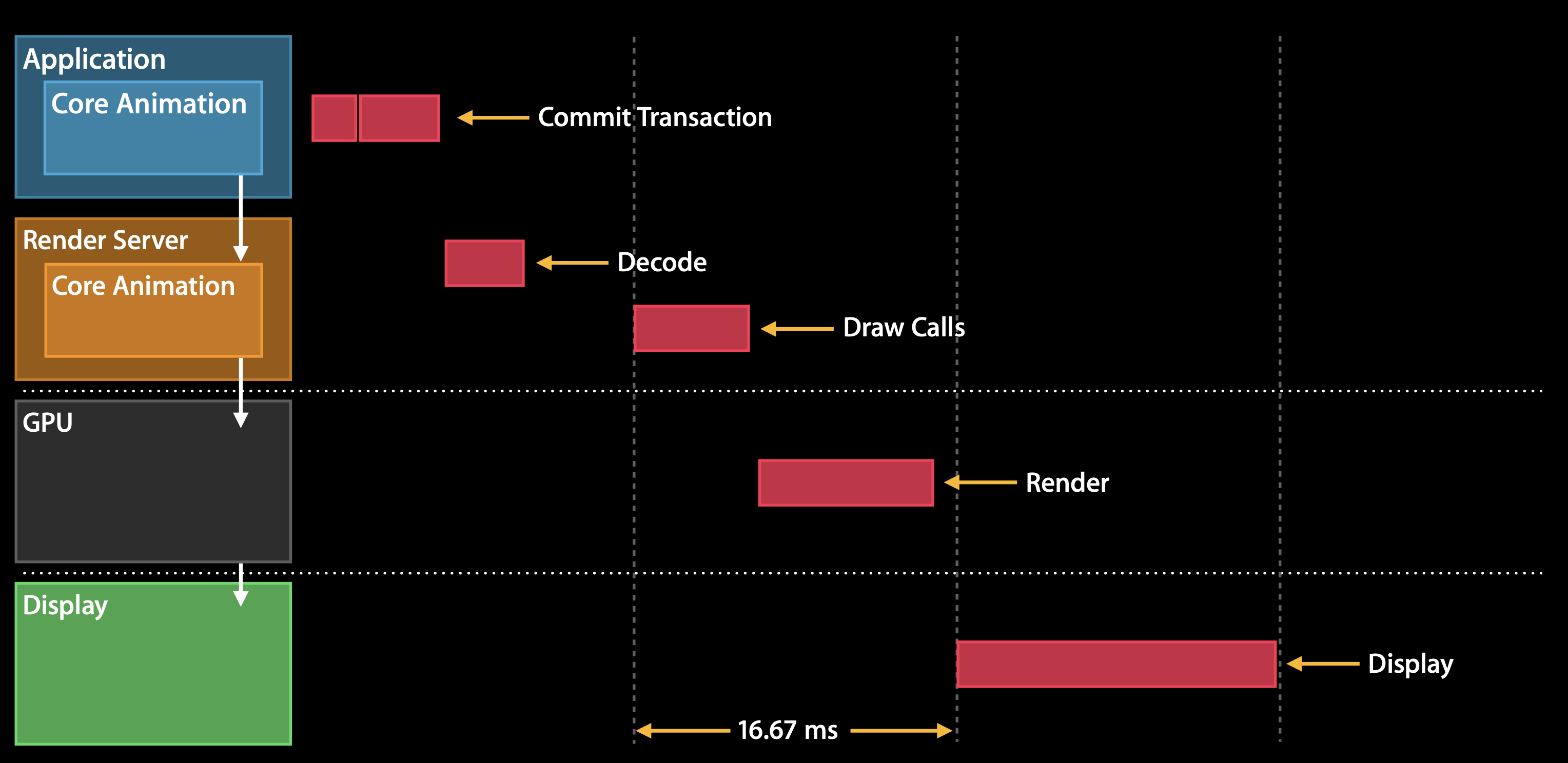
Commit transaction (which happens in your app) has 4 sub-phases:
- Layout - set up views
- Display - draw views
- Invoke
drawRect: - Usually CPU (i.e. Core Graphics) or memory bound
- Prepare - additional Core Animation work
- Image decoding (JPGs, PNGs) and image conversion (if in format not supported by GPU, e.g. index bitmap)
- Commit - serialize layers and send to render server
- Recursively iterates over entirely layer tree
- Expensive if layer tree is complex
- Performance tip: keep layer tree as flat as possible
Animations are processed in 3 stages (first 2 in your app, last step in render server):
- Create animation and update view hierarchy
- Prepare and commit animation
- Render each frame (render server)
Rendering Concepts
Tile-based rendering - screen is split into tiles of NxN pixels (each tile fits in SoC cache)
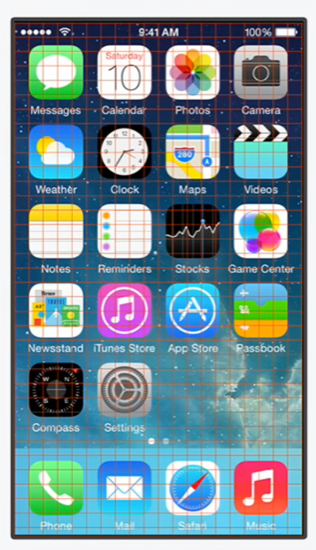
Geometry is split into tile buckets
Example: phone icon
- CALayer is spread across many tiles, and layer itself is split into two triangles
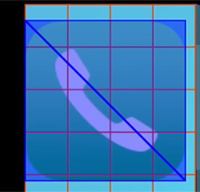
- Internally, GPU will further subdivide the triangles until each triangle fits in exactly one tile
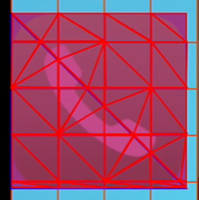
Rasterization begins after all geometry is submitted
Render pass steps:
- Core Animation submits OpenGL/Metal calls to GPU command buffer
- Vertex processing (i.e. vertex shaders) transform all vertices into screen space
- Perform tiling (i.e. split geometry into tiles) and write tiled geometry to parameter buffer
- GPU waits until all geometry is processed or until parameter buffer is full
- Pixel processing (i.e. pixel shaders) and writes output to render buffer

Example: Masking requires 3 render passes
Render pass 1: Render layer mask into texture
Render pass 2: Render layer content to texture
Render pass 3: Apply mask to content texture
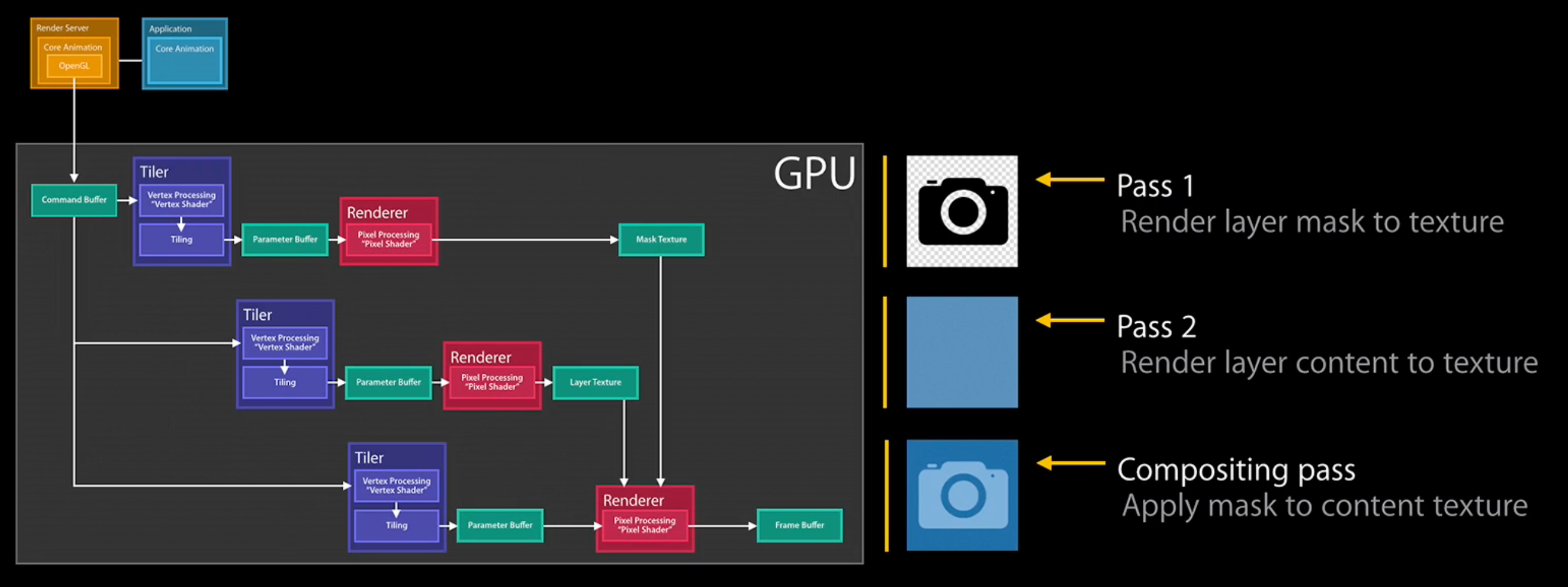
UIBlurEffect
UIBlurEffect requires 5 render passes (but exact number of render passes can depend on hardware model) 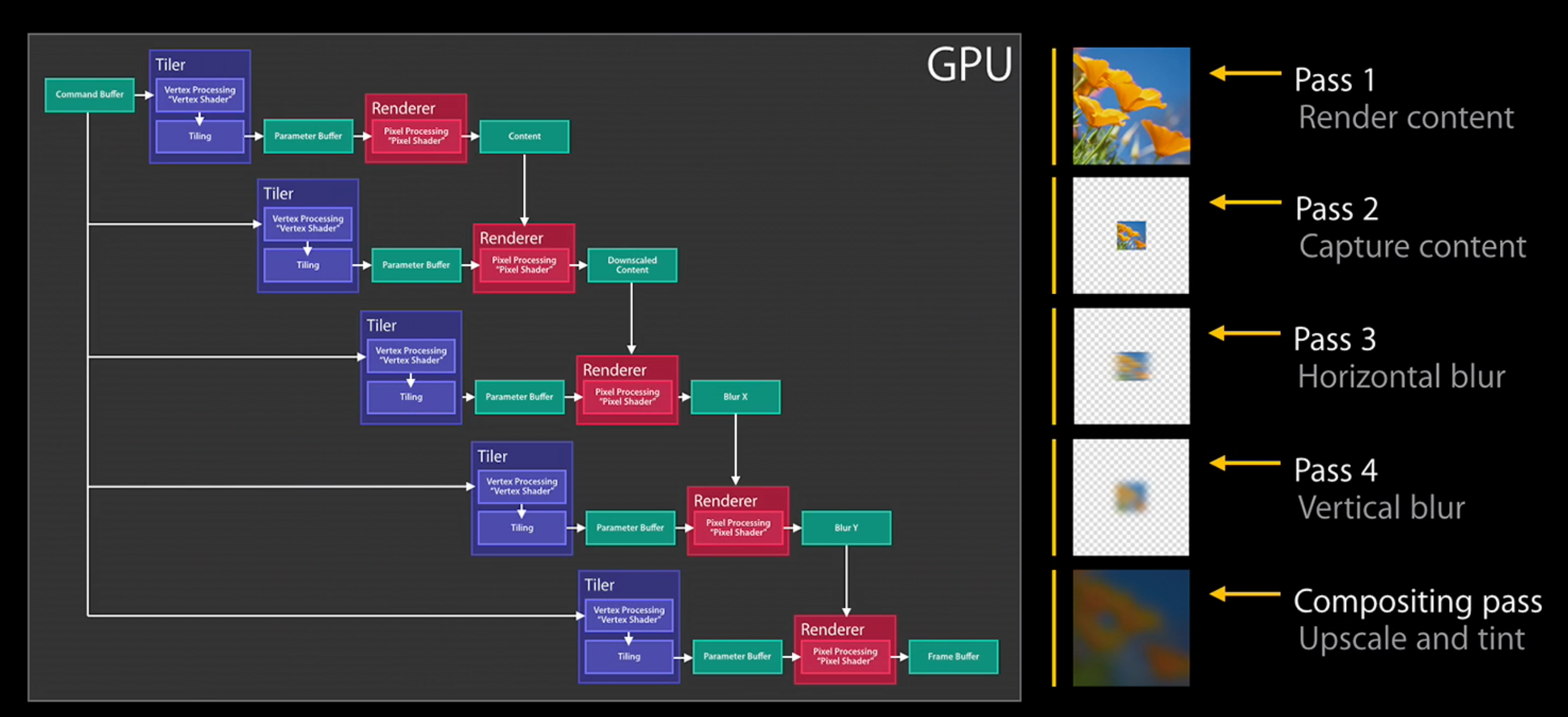
What does GPU utilization look like for the 5 render passes? 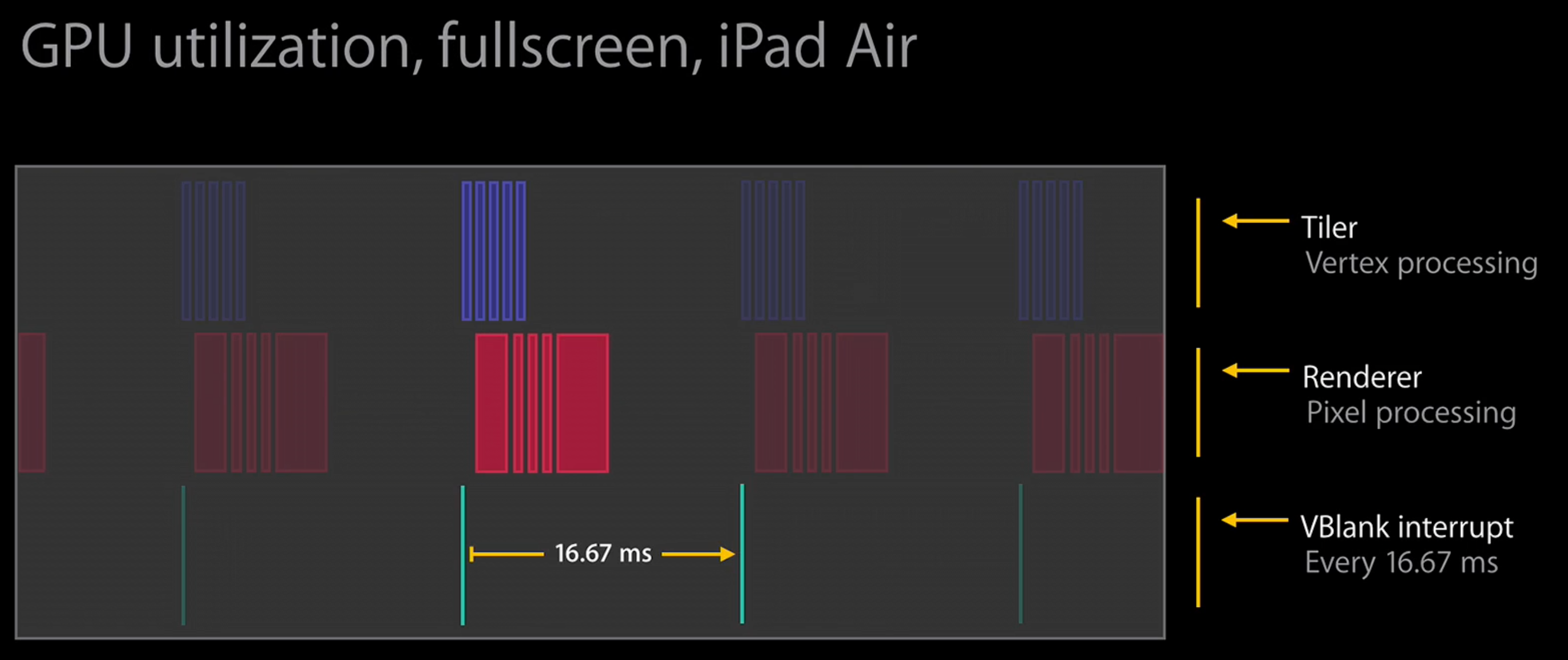
Note the 5 bars in each display frame that correspond to each render pass
Note that first tiler pass has to finish before first renderer stage can start
Note that 1st renderer pass is long (i.e. slow) because it actually renders the content
2nd pass (downscaling) is actually ~constant time
3rd and 4th pass (blurring) are fast since only applying to small area
Note the gaps in the renderer passes (highlighted in orange) - those are because GPU has to context switch: 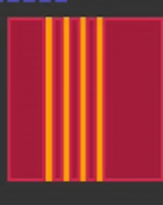
UIVibrancyEffect
UIVibrancyEffect has 7 render passes: first 5 passes are same as UIBlurEffect, last 2 passes use the blurred texture
Note that more passes = more context switches = more idle time, which eats away at the 16.6ms we have to render the display frame
Performance Checklist
CPU or GPU bound?
- Generally want to perform rendering on GPU, but sometimes CPU rendering makes sense
- Use both OpenGL ES Driver instrument and Time Profiler instrument to help make tradeoff
Too many offscreen passes?
Use e.g. shadowPath to remove shadow pass
Too much blending?
Strange image formats or sizes?
Avoid on-the-fly conversions or resizing
Any expensive effects? (e.g. blur and vibrancy)
Anything unexpected in hierarchy? (e.g. accidentally leaving excessive views in the view hierarchy)
Use View Debugging feature in Xcode to carefully examine your view hierarchy and make sure it matches what you think it should be